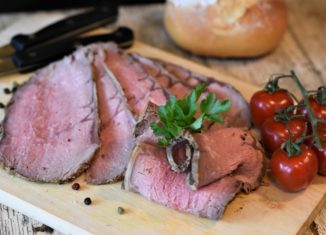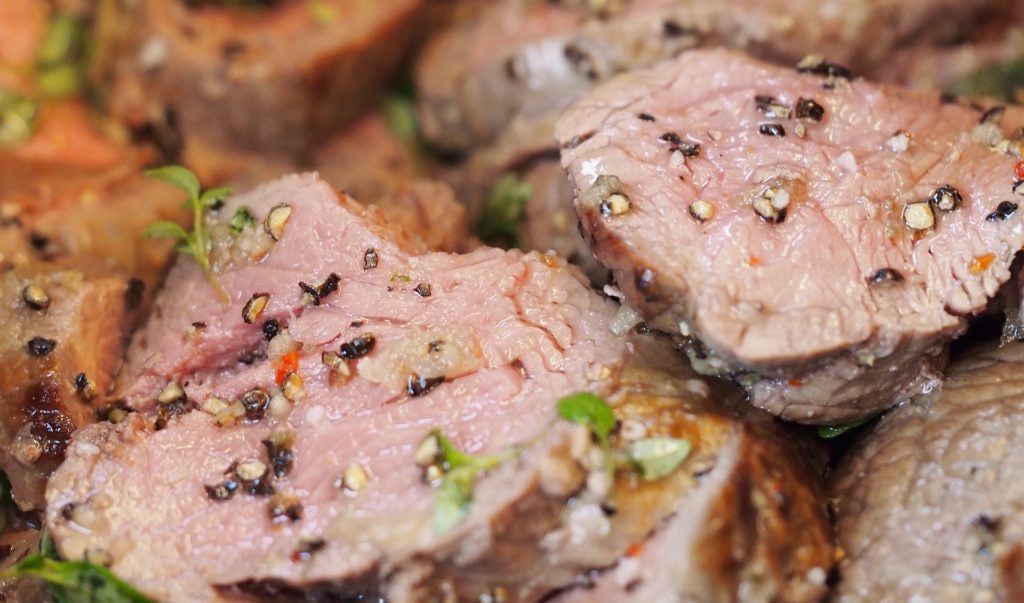
Out of all of the meats you could possibly cook on a grill, roast beef definitely belongs to the trickier ones. If not done properly, it could turn dry and chewy quite quickly, not making for the best experience for yourself and your guests. On the other hand, if you get it just right, there are few flavors in the world that could match the taste of a tender beef roast cooked to perfection.
There are many factors you should take into account when preparing this type of meat. First and foremost, consider your guests’ preferences. A well-done grilled beef roast will taste different from medium-rare, and so you should be ready to cook multiple batches if there is a significant difference of opinions on that matter at the dinner table. Secondly, the kind of grill you’re using makes a difference as well. So do the recipes you’re using to season the meat.
Although it may seem like a complex and difficult process, if you want to grill the perfect roast beef, it all comes down to timing and temperature. Both the cooking enthusiasts from outdoorcookingpros.com and other connoisseurs of grilled meats will tell you that a cool head and a tight grip on time should be enough to make a mean chunk of beef.
If you’re about to grill this kind of meat for the first time and are looking for tips, keep reading to learn everything you need to know before you start!

Not All Roasts are the Same
Do not overlook this point when you go out to the store to buy the piece of roast. If you go out and get the wrong parts, your meat is going to end up either really dry or really chewy, no matter how closely you follow the recipes or timing advice.
Generally, you should avoid chuck roast – they contain a lot of connecting tissue with an uneven distribution of fat, which makes it difficult to cook on high heat in a short period of time. This applies to pretty much all types of chuck roasts, including bottom chuck roast and chuck shoulder roast, but also the top blade and 7 bone roast.
If you do happen to have the types of beef mentioned above stored in your freezer, you should consider cooking them in the oven at a low temperature over an extended period of time, a couple of hours at the least. The meat won’t go to waste, not to mention the fact that it’ll make for a mouth-watering feast!
So what roast beef is the best for cooking on a grill? The general rule is to look for cuts that don’t rise to extremely high levels of internal temperature, even when cooked on very high heat. If you’re tight on budget, but still want the best possible experience, go for the top round roast. Not only is it cheap, but it is also the leanest option of them all. Aside from the top round, you can’t go wrong with rib roast, which is a favorite amongst many beef lovers.
For the ultimate grill experience, opt for beef tenderloin, also known as the fillet. It is the creme of the crop when it comes to beef roast, which also, unfortunately, means that you’re going to have to splash some dough on it. It’s more than worth it, as you won’t find a better, juicier cut of beef than that.
The Best Cooking Technique and Temperatures
Regardless of whether you’re grilling top round roast, rib roast, or beef tenderloin, you’ll achieve the best results if you start off cooking over direct heat and finish off the job with indirect heat. The initial phase will turn the outside of your roast nice and crispy, as well as give it that beautiful, brownish color. As you transition to indirect heat, it will ensure that your meat’s internal temperature gradually increases to the desired levels. Don’t overlook lowering the heat, so you don’t run the risk of burning the roast on the outside, and undercooking on the inside. If possible, use a gas grill for maximum control.
Naturally, the doneness of the meat is up to your and your guests’ preferences. If you’re unsure about these levels and when to take the meat off your grill, here is a quick cheat sheet to make that task easier for you:
- Rare – remove at 120-125°F
- Medium rare – 130-135°F
- Medium – 140-145°F
- Medium well – 150-155°F
- Well done – 160-165°F
Final Steps
After removing your roast beef from the grill, you should rest it for a while in order to allow the heat to travel from the outside to the inside of your roast. Let it sit for at least 15 minutes, and that’s if you’re in a hurry. It’s best if you leave it out for longer than that, but no longer than 30 minutes. The safest measure would be to wait around 20 minutes after you’re done grilling, for maximum juiciness and tenderness. It’s a highly important part of the process, one that many recipes overlook.
Conclusion
Using a grill to bring a beef roast to perfection may seem difficult at first, but after a couple of trial runs, you should be confident enough to carry out the process without any additional help. Don’t be too hard on yourself if it doesn’t work out at first, and most importantly – grill safely!
Maciej Grzymkowski – an avid traveler with a particular affinity for Southeast Asia. Some people travel the world for the sights, I do it for the flavors. Though I love a juicy tenderloin just as much as anyone, I strongly oppose the treatment of animals by big industry and believe in the importance of supporting locally-sourced meat and dairy products.
